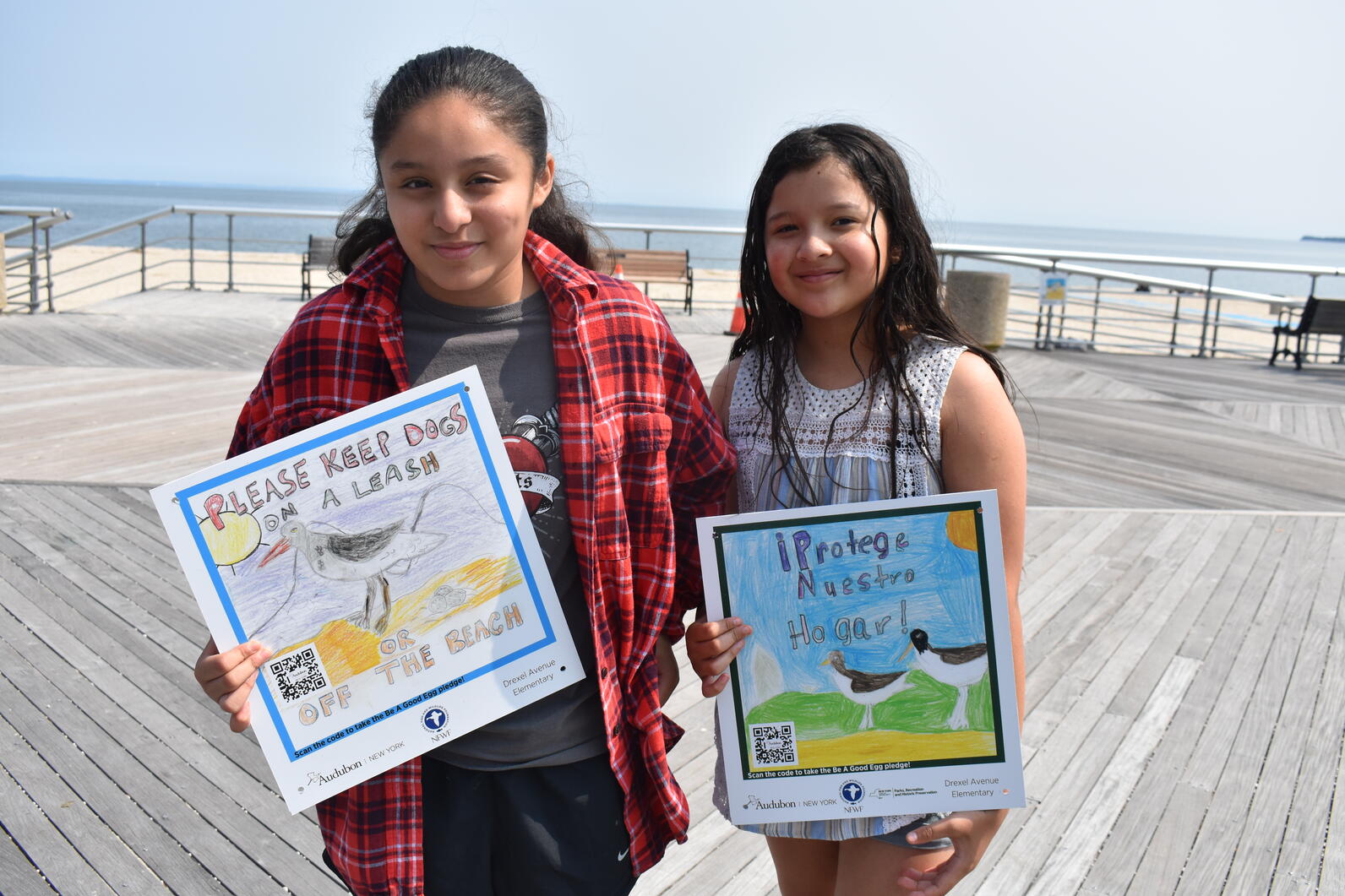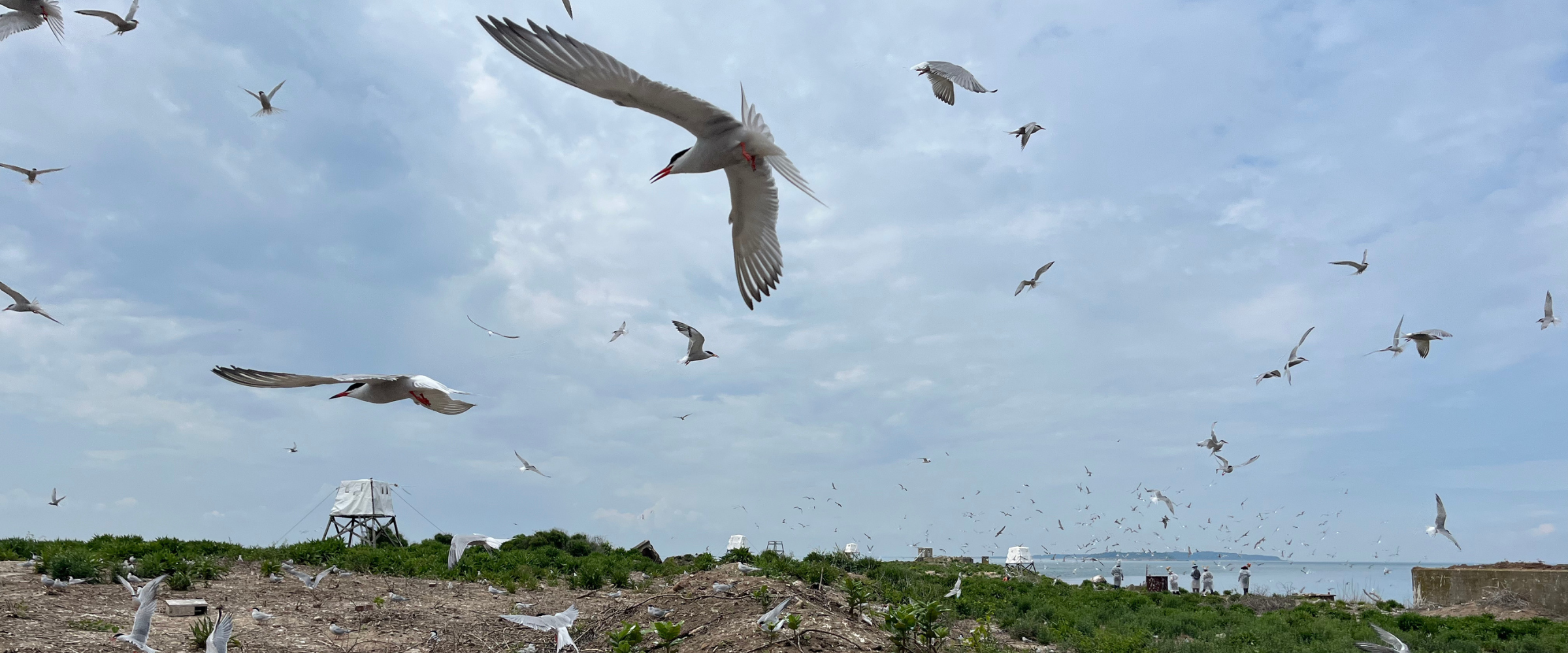Coastal birds are in crisis, and our marshes, islands, and beaches are being squeezed by rising sea levels and human development.
Audubon is working to address these pressing issues by reducing threats to beach-nesting birds, restoring and protecting coastal habitats, and creating paid opportunities for young people to become the conservation leaders of tomorrow.
We are proud to share all that was accomplished in 2023!
PARTNERING TO MONITOR CHICKS, ON CAMERA AND ON THE BEACH
Five of the 10 sites we monitored across the North and South Shore of Long Island had nesting shorebirds this year! We recorded 22 Piping Plover chicks, 10 of which survived the season, for an average productivity of 1.6 Piping Plover chicks fledged per pair. We also monitored 11 pairs of American Oystercatchers and 24 pairs of Least terns.
We wrapped up a monitoring project on Carter’s Island, as part of a partnership with the Town of Brookhaven. Staff have been visiting the island to evaluate the habitat, set up chick shelters, remove vegetation, set up cameras, and monitor conditions. We went out in June this year for a final visit and to collect cameras set up by the Town. Camera footage revealed that Common Terns made nesting attempts in May but abandoned the island soon after.
In June, our New York-based Coastal Program Manager Shelby Casas was invited by the New York DEC and the team at Great Gull Island to take part in the island-wide nest survey, during which the group counted over 8,000 Common Tern nests.
We also assisted New York State Parks in monitoring their American Oystercatchers at Jones Beach State Park.
EXPANDING INCLUSIVE PROGRAMMING
In celebration of Latino Conservation Week, we organized a small festival at Sunken Meadow State Park called “Long Island's Dia de conservación Latina / Long Island’s Latino Conservation Day" that showcased Audubon’s work, along with eight other conservation organizations.
Together we hosted family-friendly activities, presentations, and information tables. There were touch tanks, bird walks, arts and crafts that guests could take part in to learn about the environmental and conservation work happening around Long Island.
In the fall, Audubon conservation staff, along with program staff from the Theodore Roosevelt Sanctuary and Audubon Center, hosted two bilingual bird walks; one at Jamica Bay Wildlife Refuge (with National Park Service staff), and the second at Lido Beach and Natural Area Preserve with the Town of Hempstead.

BRINGING “BE A GOOD EGG” TO MORE LOCAL COMMUNITIES
We were thrilled to have East Hampton’s Natural Resources Department and North Fork Audubon Society join our local outreach efforts this summer!
Our Long Island-based staff brought big smiles and educational materials to 19 events, while our partners beat us, attending a grand total of 27 events across Long Island to help beachgoers be learn to protect nesting shorebirds. As of publication, we have counted over 3,000 "Be a Good Egg" pledges signed by Long Island residents and beach visitors promising to keep a safe distance from adult birds and chicks.
228 volunteers gave over 800 hours of outreach and event participation, from Least Tern shelter building to beach cleanups.
Before beach season began, Theodore Roosevelt Sanctuary and Audubon Center staff taught 620 Long Island students about beach-nesting bird biology and conservation needs. Students designed signs about protecting birds in multiple languages including English, Spanish, and French. Eventually, 45 students’ winning prints were installed at nesting sites in the Towns of Oyster Bay, the Town of Brookhaven, and Sunken Meadow State Park.
The Sanctuary also brought on two high school interns to learn about shorebird biology, and help lead public outreach efforts to protect Long Island’s nesting shorebirds. They worked with our seasonal Outreach Technician to host “Be a Good Egg” events across Long Island.




